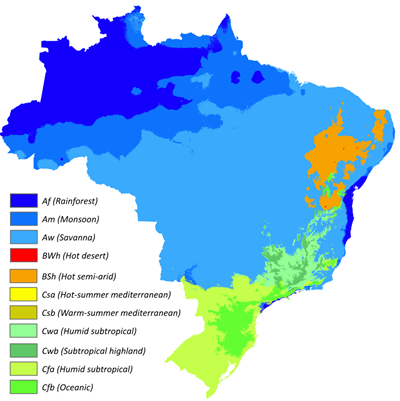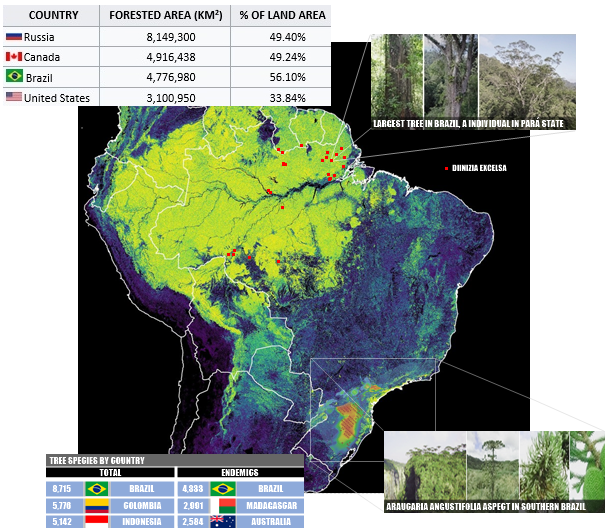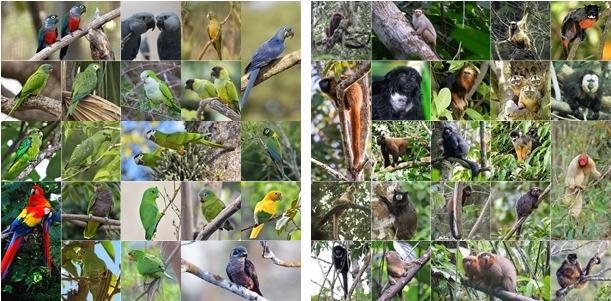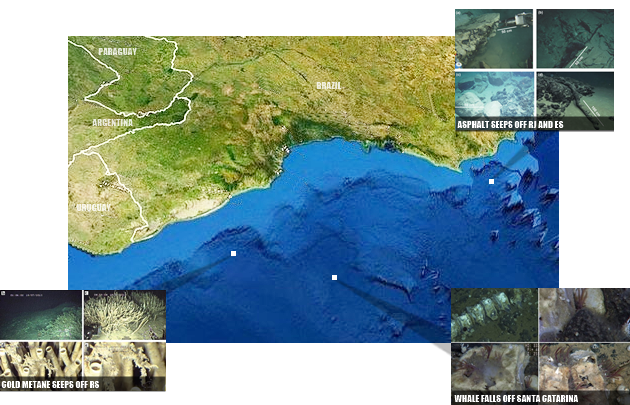NON-AUTHOR TEXT ALERT: in this post we have copied the text from Wikipedia (SEE) about the History of Brazil, a very summarized version, with slight adaptations and images prepared/adapted by Brazil in X-Ray, until 1950. For a fantastic compilation of the evolution of the Brazilian territory, we recommend Panmythica (BLOG, 2008).
Some of the earliest human remains found in the Americas, Luzia Woman, were found in the area of Pedro Leopoldo, Minas Gerais and provide evidence of human habitation going back at least 11,000 years. The earliest pottery ever found in the Western Hemisphere was excavated in the Amazonas river basin of Brazil and radiocarbon dated to 8,000 years ago (6000 BC). The Marajoara culture flourished on Marajó in the Amazonas delta from 400 CE to 1400 CE, developing sophisticated pottery, social stratification, large populations, mound building, and complex social formations such as chiefdoms; for somes details abouth Amazonean occupation, we recommend Souza et al. (Nature, 2018), about Pre-Columbian earth-builders settled along the entire southern rim of region, and M. J. Heckenberger et al. (Phil. Trans. R. Soc. B., 2007), about the legacy of cultural landscapes in the Brazilian Amazone. CABRALINE ERA
In 1500, the territory of current day Brazil had an estimated indigenous population of 7M people, mostly semi-nomadic, who subsisted on hunting, fishing, gathering, and migrant agriculture. Before the arrival of the Europeans, the boundaries between these groups and their subgroups were marked by wars that arose from differences in culture, language and moral beliefs. These wars also involved large-scale military actions on land and water, with cannibalistic rituals on prisoners of war.
PORTUGUESE COLONIZATION
Following the 1494 Treaty of Tordesillas, the land now called Brazil was claimed for the Portuguese Empire on 22 April 1500, with the arrival of the Portuguese fleet commanded by Pedro Álvares Cabral. Though the first settlement was founded in 1532, colonization effectively began in 1534, when King John III of Portugal divided the territory into the fifteen private and autonomous Captaincy Colonies of Brazil. In 1549 the city of Salvador began the capital of a single and centralized Portuguese colony in South America; the country lived with Europeans and indigenous people at war and occasional opportunistic alliances, and the sugar cane cycle, which fostered the importation of slave labor from sub-Saharan Africa (mainly Western Africa, Angola and Mozambique). Portuguese Brazil received more than 2.8 million slaves from Africa between the years of 1500 to 1800.
By the end of the 17th century there was a change in the backbone of the colony's economy, declining sugarcane and the gold cycle,which attracted thousands of new settlers to Brazil from Portugal and all Portuguese colonies around the world. Portuguese expeditions (bandeiras) advanced the Portugal colonial original frontiers to approximately the current borders. on the coast, other European groups were trying to occupy parts of Brazil, notably the French (in Rio de Janeiro during the 1560s, in Maranhão during the 1610s) and the Dutch (Bahia and Pernambuco).
 |
| SIX OF THE MOST IMPORTANT BANDEIRANTES IN BRAZIL |
The two main objectives of Portuguese colonization in Brazil were to keep under control and eradicate all forms of slave rebellion and resistance (e.g. Quilombo of Palmares) and to repress all movements for autonomy or independence (e.g. Minas Conspiracy).
UNITED KINGDOM WITH PORTUGAL
In late 1807, besides hostilities with Spanish and Napoleonic forces, Prince Regent João to move the royal court from Lisbon to Rio de Janeiro, where they established some of Brazil's first financial institutions, ending the Portuguese monopoly on Brazilian trade and opening Brazil to other nations. In 1809, in retaliation for being forced into exile, French Guiana was invaded by Brazil. With the end of the Peninsular War in 1814, the court should return to Portugal; however, to justify his stay in Brazil,, the Crown established the United Kingdom of Portugal, Brazil and the Algarves, a pluricontinental transatlantic monarchic state. By great pressure in Portugal, in 1821, João VI is departed for Lisbon, leaving his son, Prince Pedro de Alcântara, as Regent of the Kingdom of Brazil.
INDEPENDENT EMPIRE
Motivated by tensions between Portuguese and Brazilians, Prince Pedro decided to stand with them, declaring the country's independence from Portugal on 7 September 1822, named 1 month later as first Emperor of Brazil, with the royal title of Dom Pedro I, resulting in the founding of the Empire of Brazil; as a result of the war of independence already spread by northern, northeastern regions and in Cisplatina, the last Portuguese soldiers surrendered on 8 March 1824; Portugal officially recognized Brazilian independence on 29 August 1825.
On 7 April 1831 Pedro I went to Portugal to reclaim his daughter's crown after abdicating the Brazilian throne in favor of his five-year-old son (who thus became the Empire's second monarch, with the royal title of Dom Pedro II). In the absence of a charismatic figure who could represent a moderate face of power, during a regency (motived by small age of son) a series of localized rebellions took place, such as the Cabanagem in Grão-Pará Province, the Malê Revolt in Salvador da Bahia, the Balaiada (Maranhão), the Sabinada (Bahia), and the Ragamuffin War, which began in Rio Grande do Sul and was supported by Giuseppe Garibaldi.
In monarchy, national debate centered on the issue of slavery, with Atlantic slave trade was abandoned in 1850, but only in May 1888, slavery was formally abolished with the approval of the Golden Law; internationally, after the Cisplatine War that resulted in the independence of Uruguay, Brazil won three international wars during the 58-year reign of Pedro II: Platine War, the Uruguayan War and the devastating Paraguayan War, the largest war effort in Brazilian history.
On 15 November 1889 (Republic Day, a national holiday), in disagreement of Imperial Army officers, rural and financial elites, the monarchy was overthrown by a military coup; few days later, the national flag was replaced with the national motto "Ordem e Progresso", influenced by positivism.
EARLY REPUBLIC
The early republican government (until 1930) was nothing more than a military dictatorship, with the army dominating affairs both in Rio de Janeiro and in the states; freedom of the press disappeared and elections were controlled by those in power; internationally, this period maintained a relative balance characterized by a success in resolving border disputes with neighboring countries (for a extraordinary scholarly text on the subject, see De Rezende, Thesis, 2006), only broken by the Acre War (1899–1902) and its involvement in World War I (1914–1918; FEB was the only America Latina military force in World War II).
ERA VARGAS
In Revolution of 1930 the defeated opposition presidential candidate Getúlio Vargas, supported by most of the military, successfully led; supposed to assume power temporarily, Vargas closed down Congress, extinguished the Constitution, ruled with emergency powers and replaced the states' governors with his own supporters. In the 1930s, three failed attempts to remove Vargas and his supporters from power occurred, in 1932, 1935, and in May 1938; the 1937 coup d'état resulted in the cancellation of the 1938 election and formalized Vargas as dictator, beginning the Estado Novo era. Throughout World War II, Brazil remained neutral until August 1942, whaen entered on the allied side. With the Allied victory in 1945 and the end of the fascist regimes in Europe, Vargas's position became unsustainable and he was swiftly overthrown in another military coup, with democracy 'reinstated' by the same army that had ended it 15 years earlier. Vargas committed suicide in August 1954 amid a political crisis, after having returned to power by election in 1950.






























